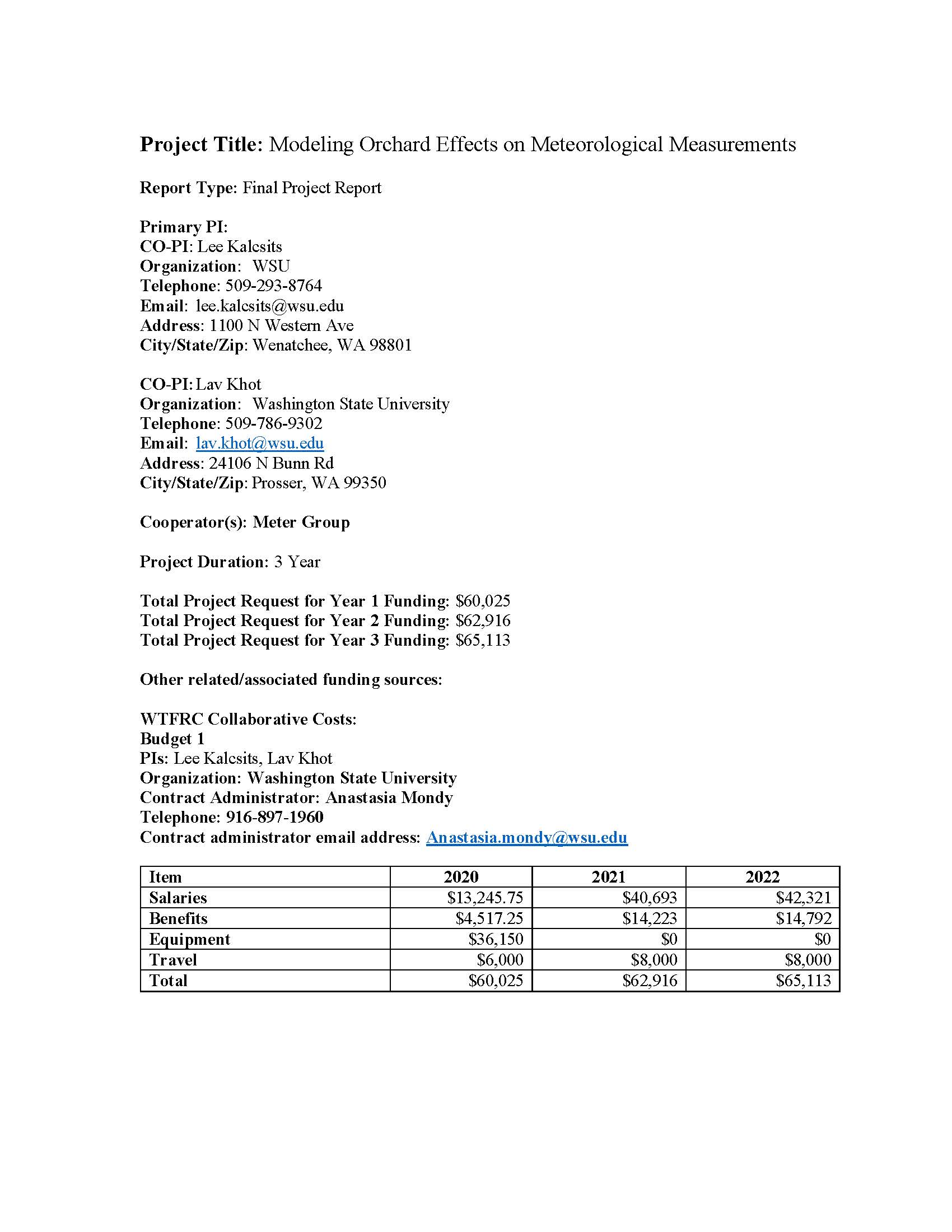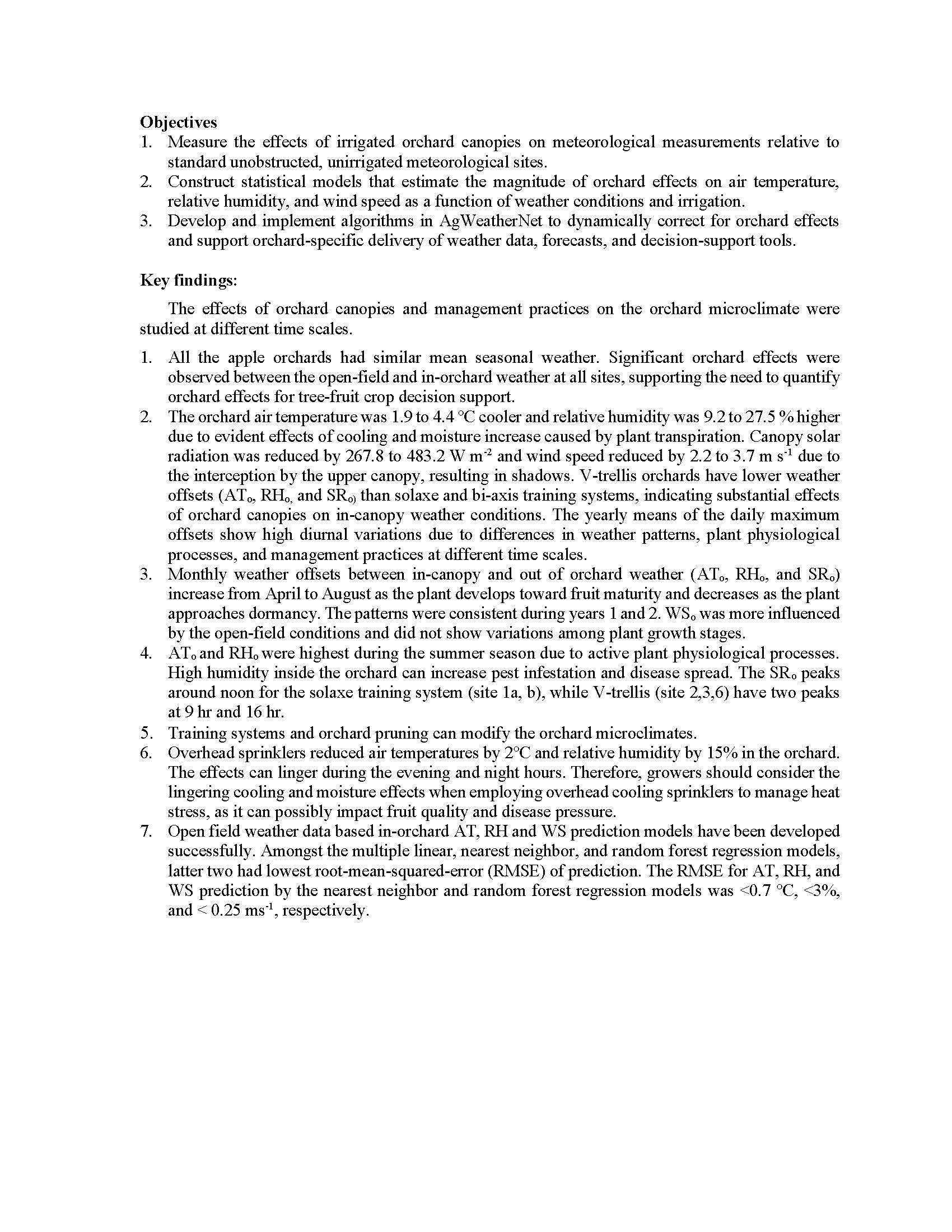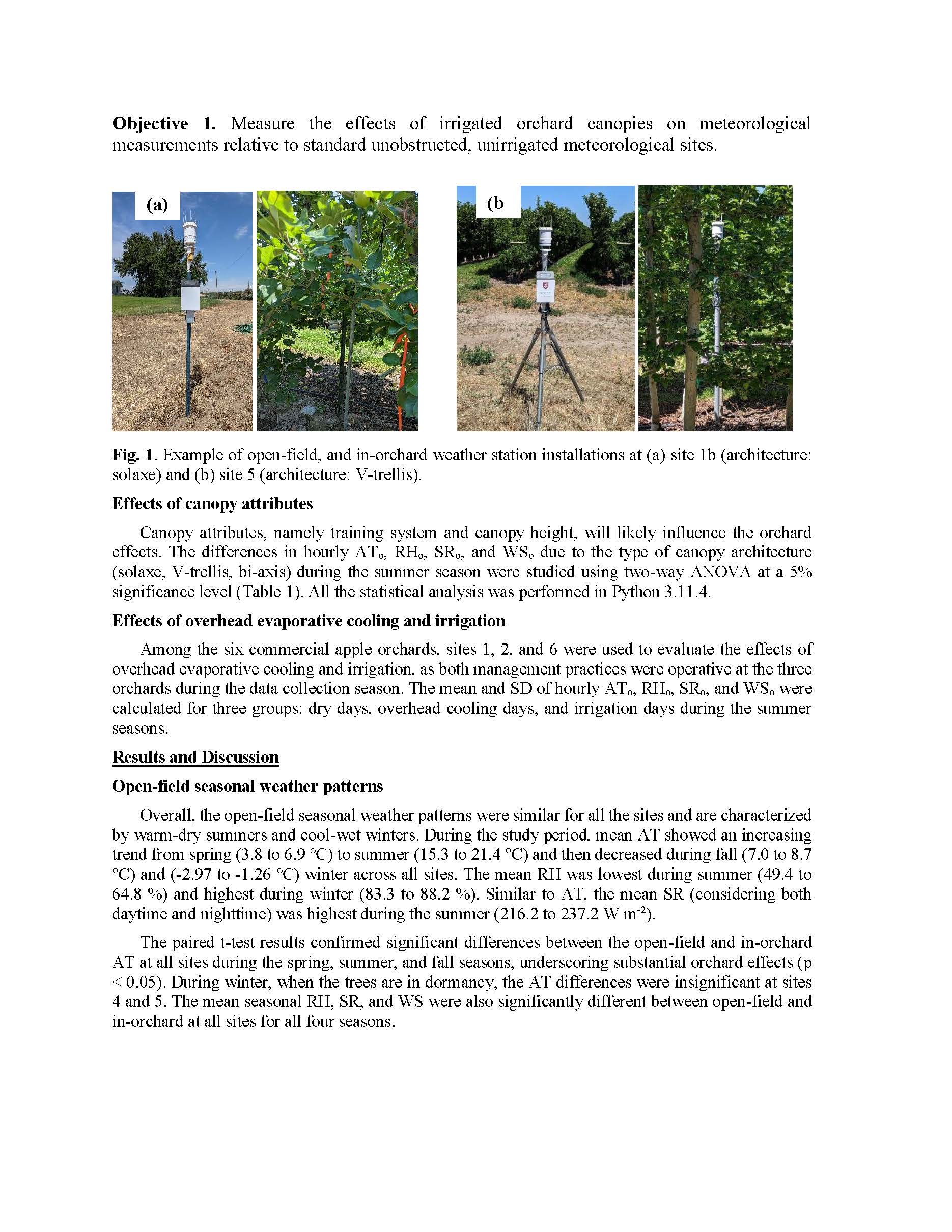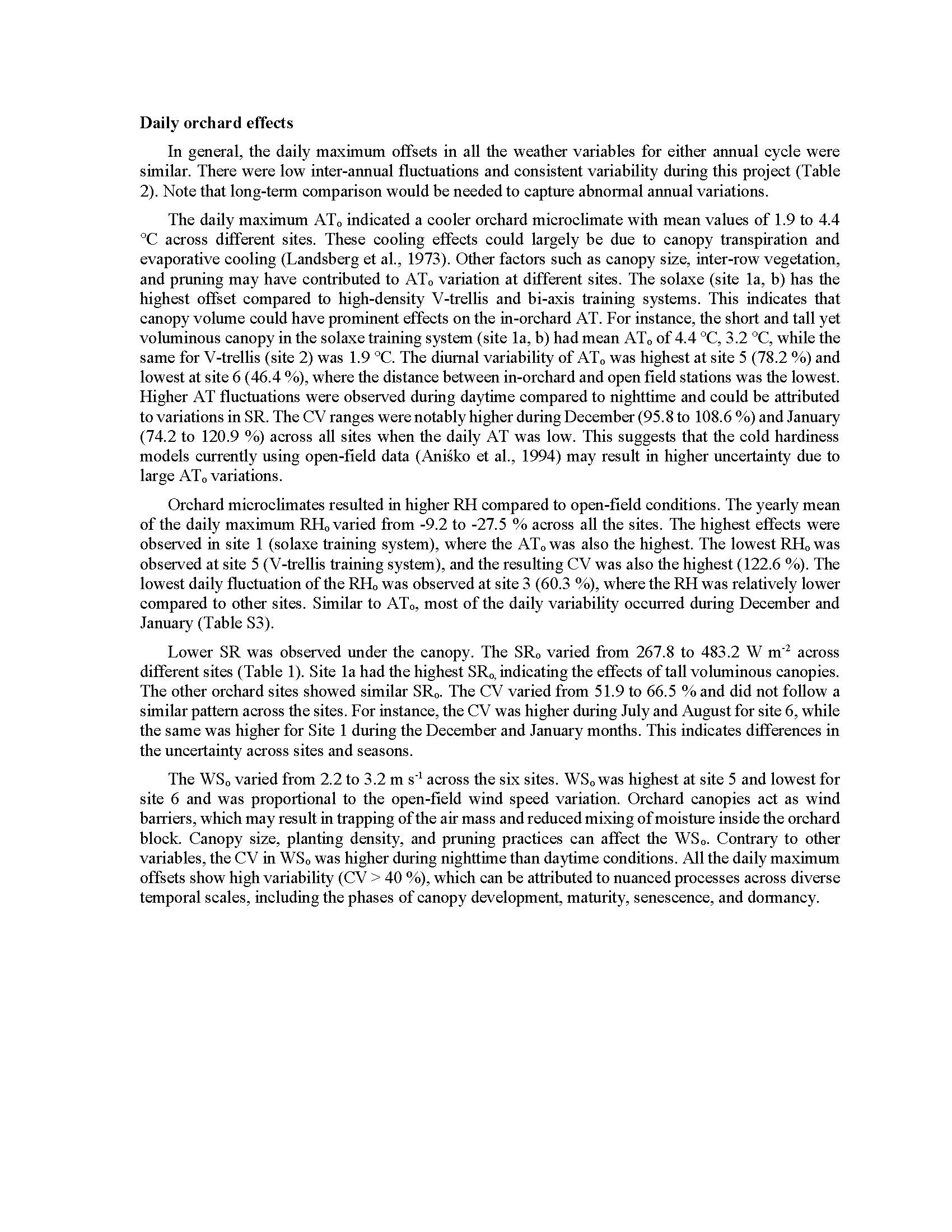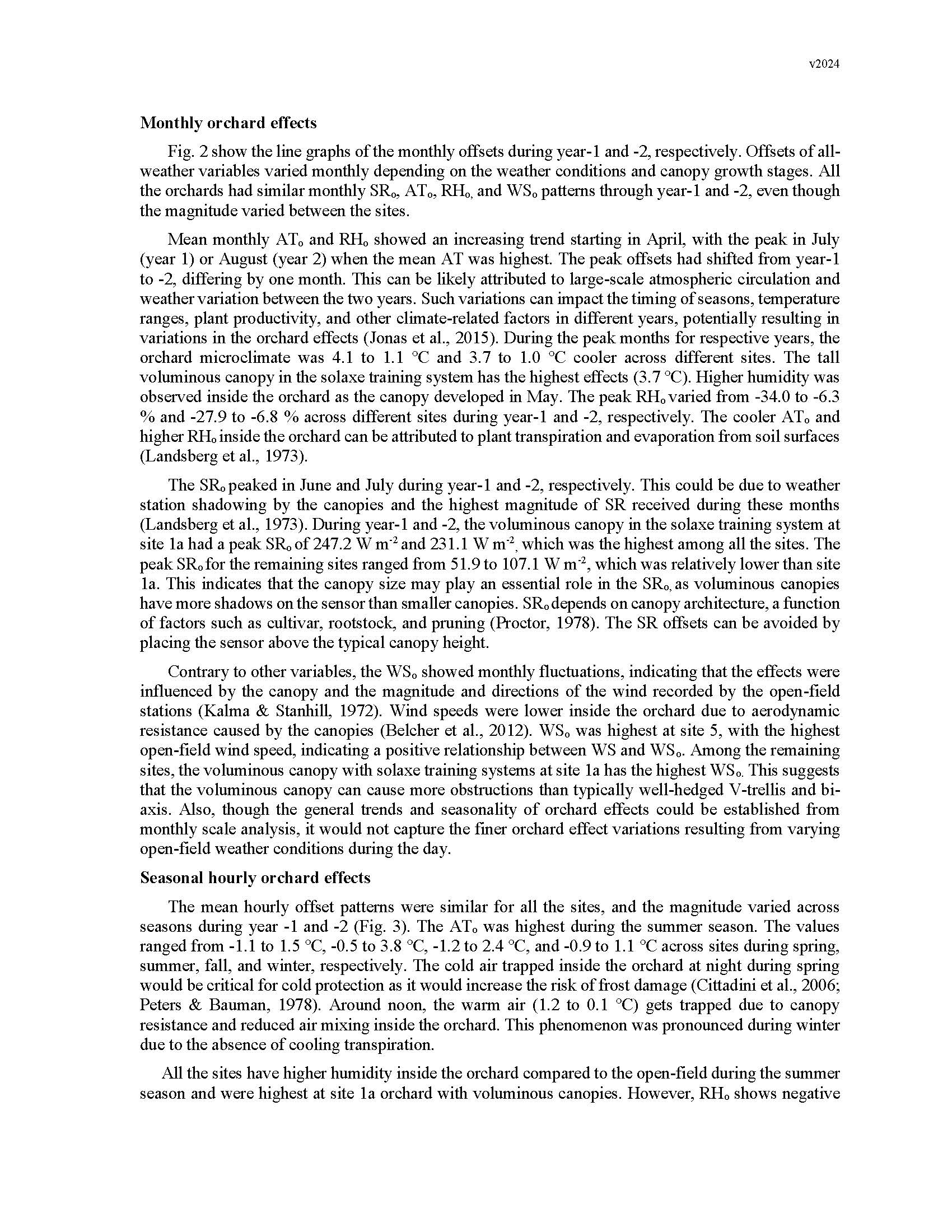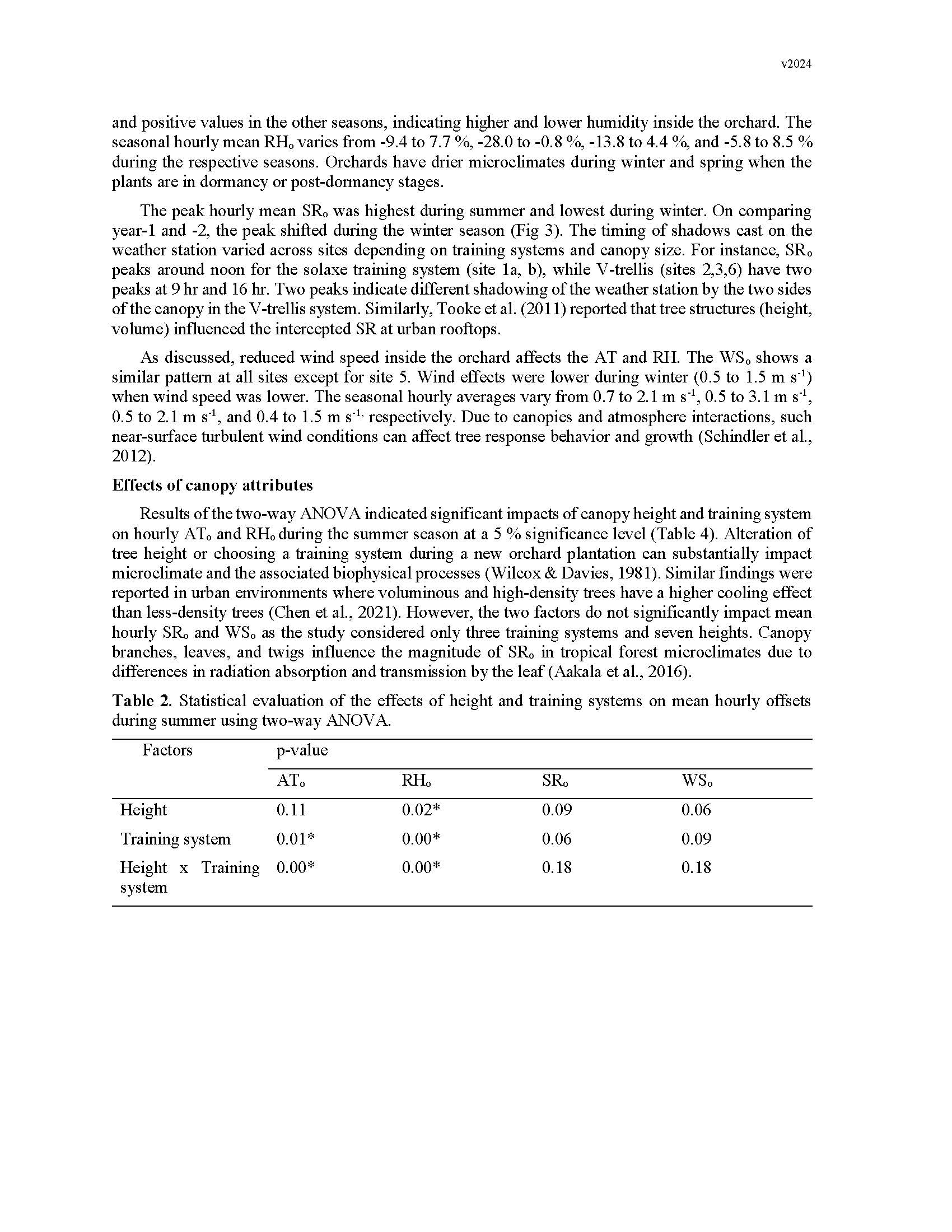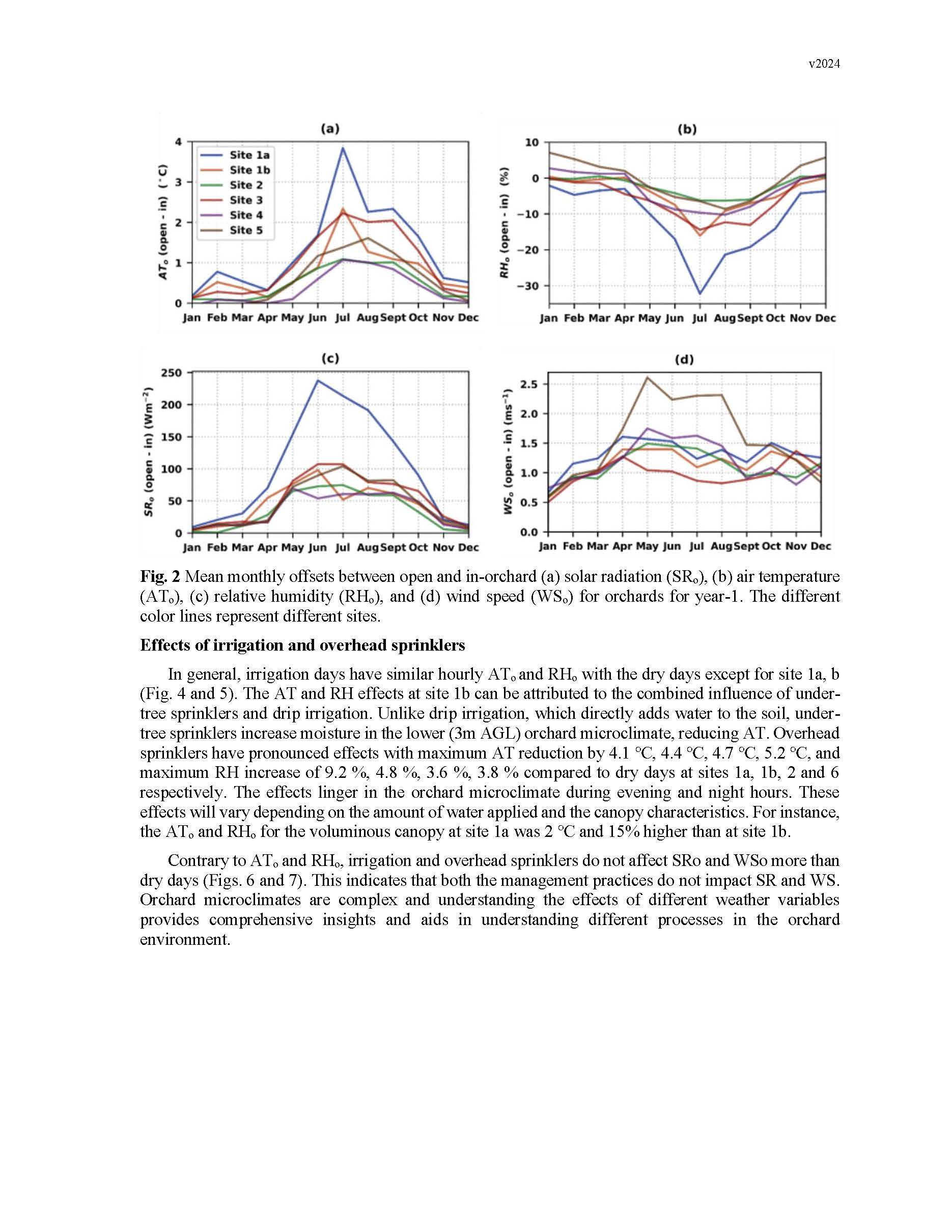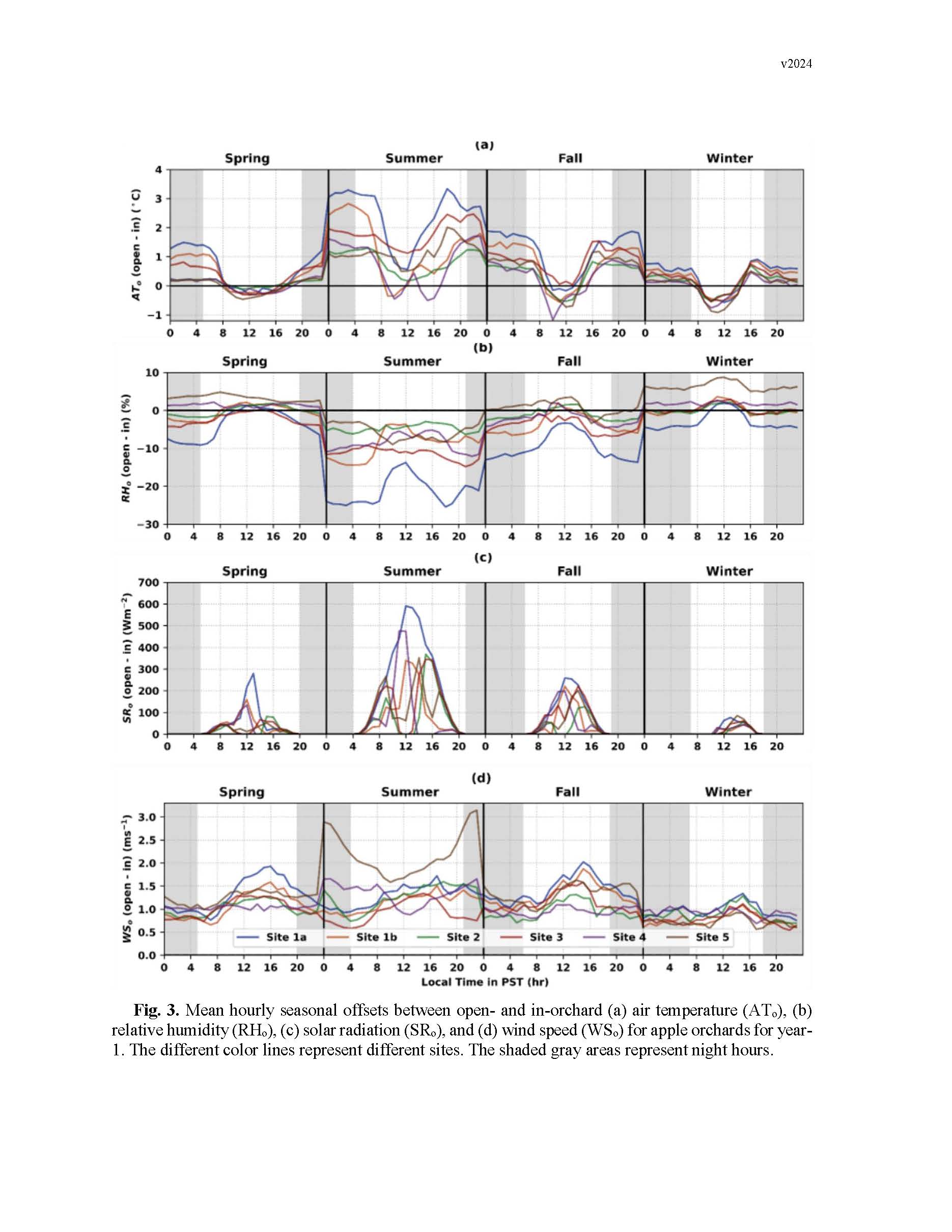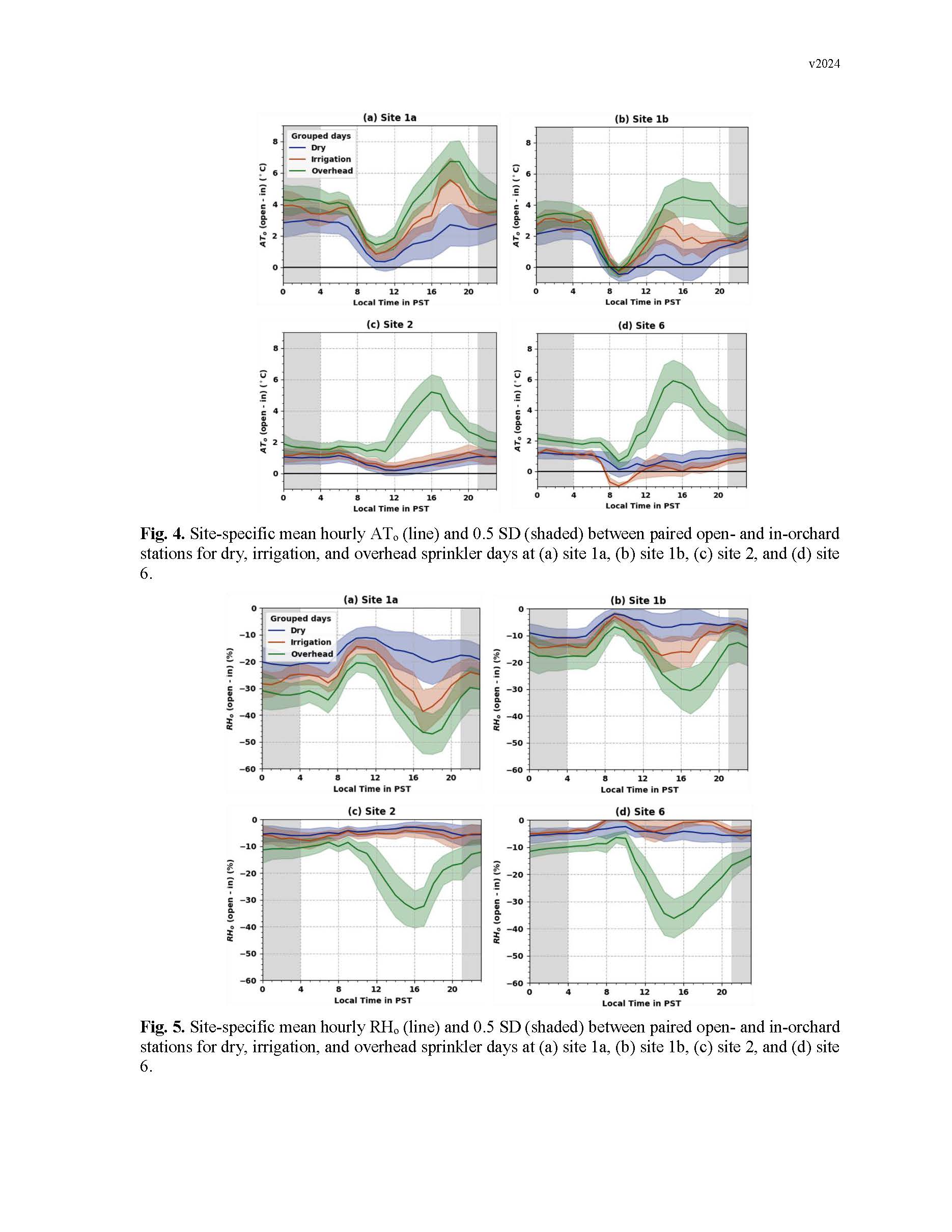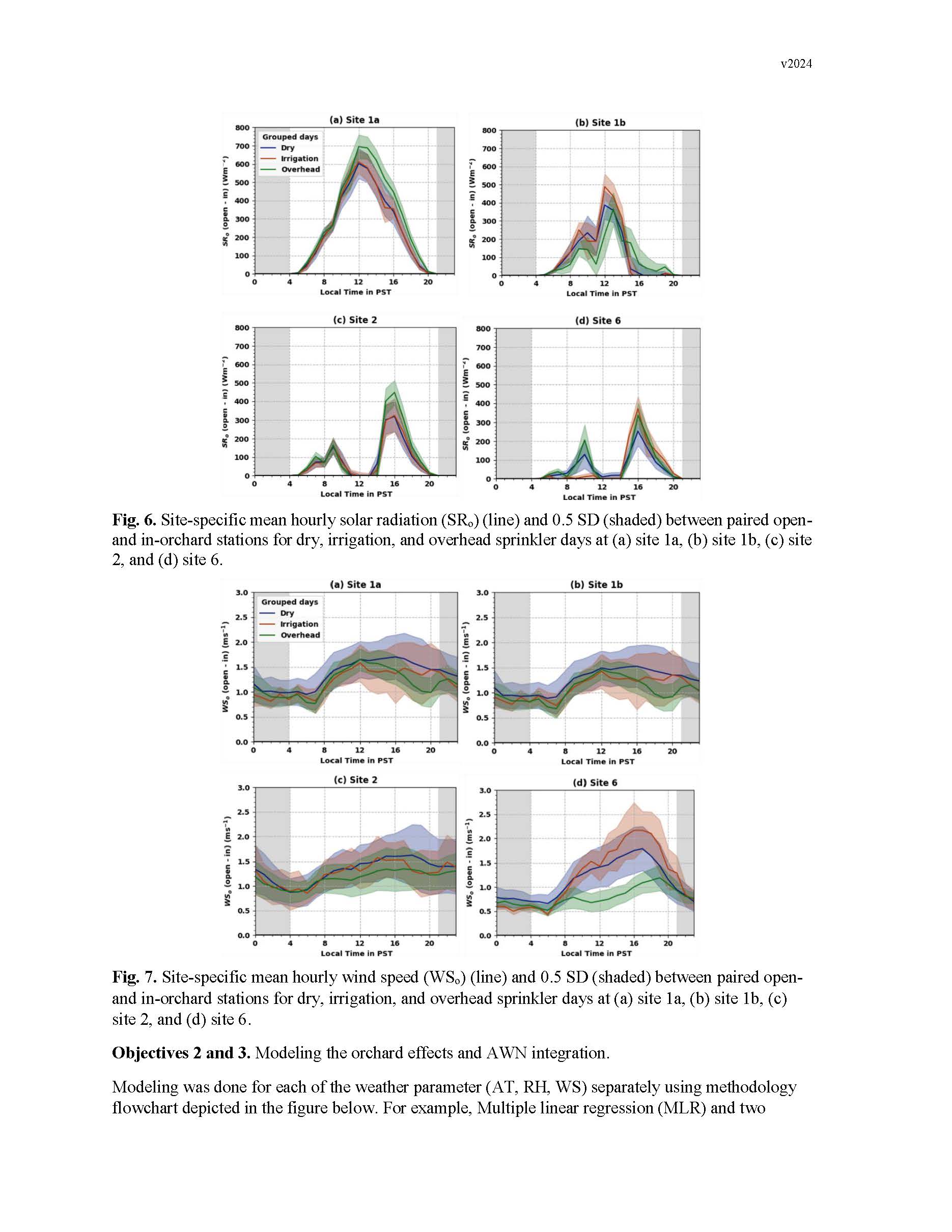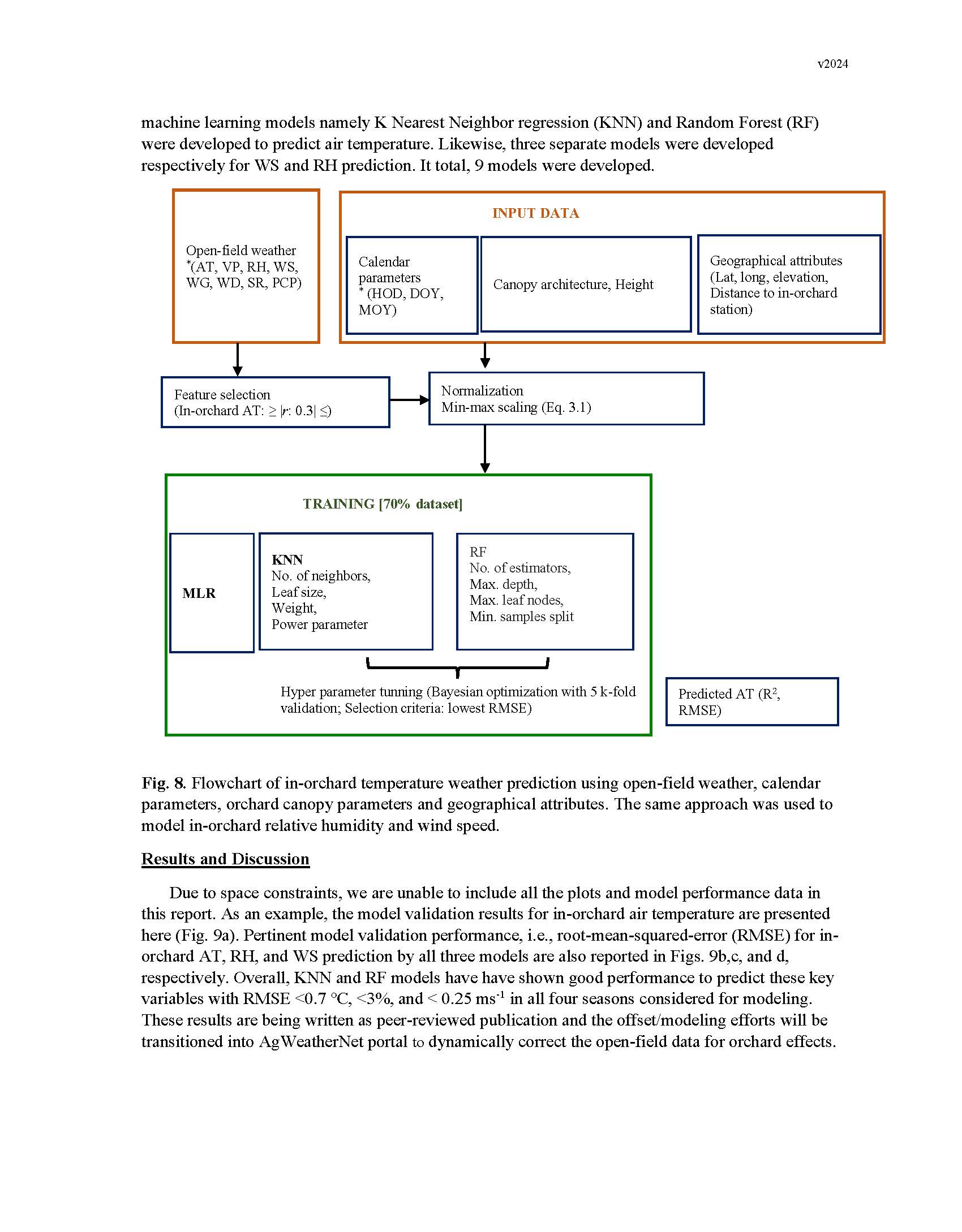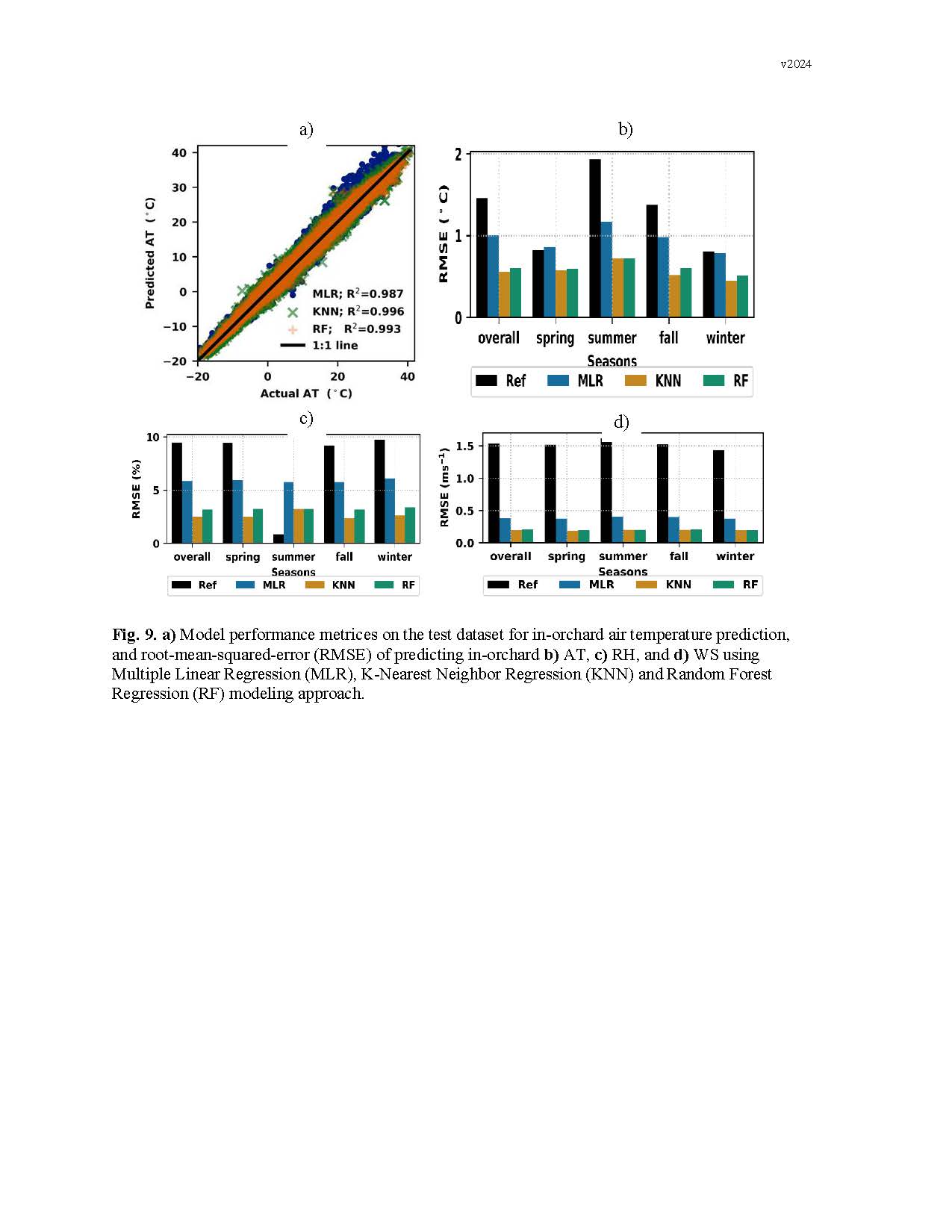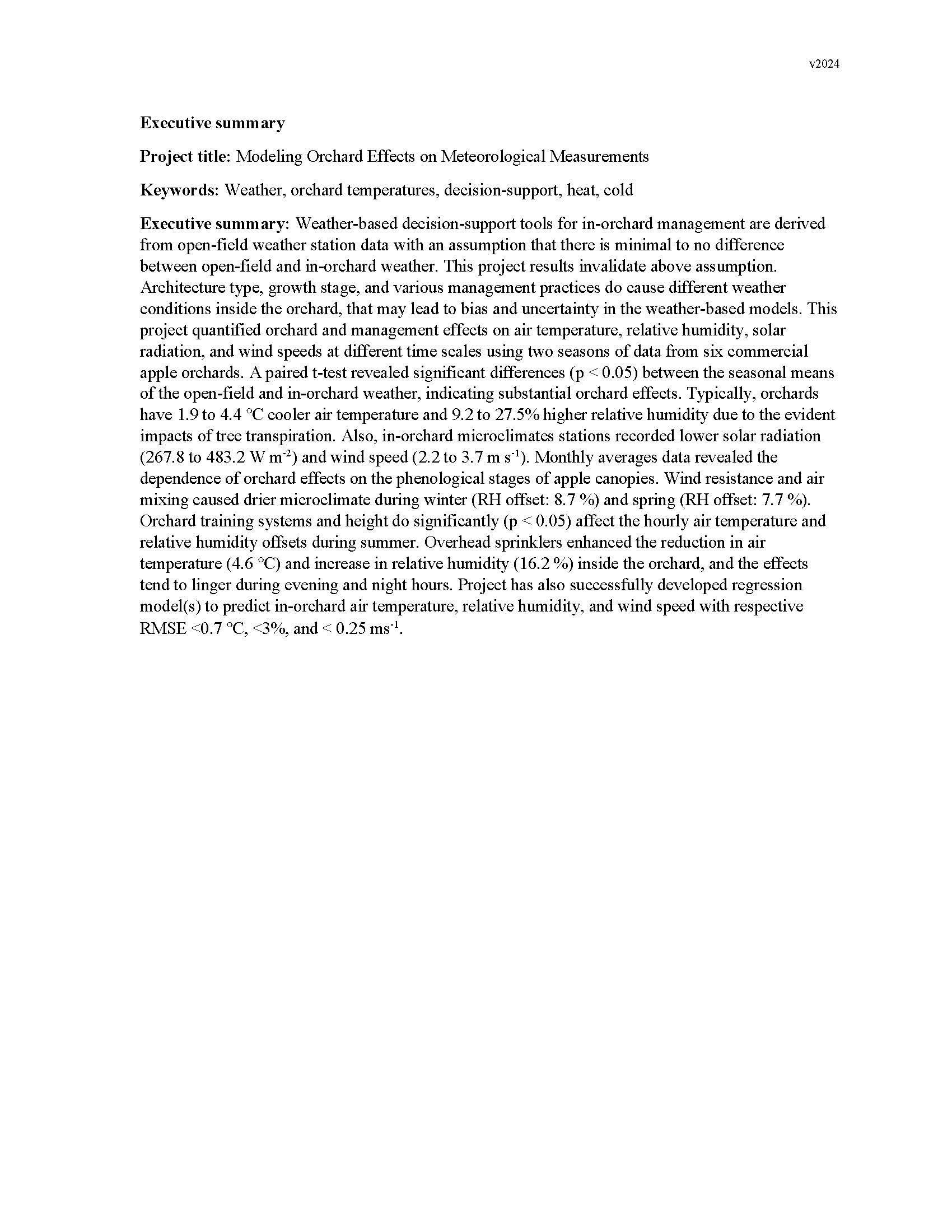Modeling Orchard Effects on Meteorological Measurements
Author: Lee Kalcsits
Published: 2024
Summary: Keywords: Weather, orchard temperatures, decision-support, heat, cold. Weather-based decision-support tools for in-orchard management are derived from open-field weather station data with an assumption that there is minimal to no difference between open-field and in-orchard weather. This project results invalidate above assumption. Architecture type, growth stage, and various management practices do cause different weather conditions inside the orchard, that may lead to bias and uncertainty in the weather-based models. This project quantified orchard and management effects on air temperature, relative humidity, solar radiation, and wind speeds at different time scales using two seasons of data from six commercial apple orchards. A paired t-test revealed significant differences (p < 0.05) between the seasonal means of the open-field and in-orchard weather, indicating substantial orchard effects. Typically, orchards have 1.9 to 4.4 ℃ cooler air temperature and 9.2 to 27.5% higher relative humidity due to the evident impacts of tree transpiration. Also, in-orchard microclimates stations recorded lower solar radiation (267.8 to 483.2 W m-2) and wind speed (2.2 to 3.7 m s-1). Monthly averages data revealed the dependence of orchard effects on the phenological stages of apple canopies. Wind resistance and air mixing caused drier microclimate during winter (RH offset: 8.7 %) and spring (RH offset: 7.7 %). Orchard training systems and height do significantly (p < 0.05) affect the hourly air temperature and relative humidity offsets during summer. Overhead sprinklers enhanced the reduction in air temperature (4.6 ℃) and increase in relative humidity (16.2 %) inside the orchard, and the effects tend to linger during evening and night hours. Project has also successfully developed regression model(s) to predict in-orchard air temperature, relative humidity, and wind speed with respective RMSE <0.7 ℃, <3%, and < 0.25 ms-1.
Keywords:

